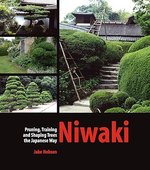Orion_metalhead
Masterpiece
A discussion on the effectiveness, plausibility, and challeneges of applying bonsai techniques to landscape situations.
Id like to experiment with things such as using wiring techniques to train landscape shrubs and trees.
What potential soil ammendments and fertilization used in bonsai can be applied to landscape environments?
Can continuous root work to landscape plants result in longevity and better health for specimen landscapr trees and plants?
Thoughts????
Id like to experiment with things such as using wiring techniques to train landscape shrubs and trees.
What potential soil ammendments and fertilization used in bonsai can be applied to landscape environments?
Can continuous root work to landscape plants result in longevity and better health for specimen landscapr trees and plants?
Thoughts????








